From the October 2021 issue of Apollo. Preview and subscribe here.
I keep being drawn back to Derby. It’s a city where, for all the boarded-up retail premises and the shocking waste of the moribund Civic Centre, manufacture is at centre stage and new ideas take root – as they have done for centuries. The Silk Mill, the first continuous production system in the world, features in my book Factory (2003). In around 1718, brothers Thomas and John Lombe established the mill on a small island in the River Derwent, close to All Saints’ Church (later Cathedral). Usefully, John quickly claimed a British patent, despite having purloined the mechanism that could twist and wind the fine thread during time spent in Livorno (industrial espionage was then the order of the day). Daniel Defoe observed that, powered as it was by a single huge waterwheel, it ‘performs the labour of many hands’; he wondered if it was worth the expense.
The Lombes’ enterprise long predated the nearby complex of cotton mills founded by Richard Arkwright and Jedediah Strutt in Cromford and Belper. As attested by the UNESCO designation of the Derwent Valley Mills site, this small area represents a crucial strand of pioneering, labour-intensive industrial development in the late 18th century. For Joseph Wright (‘Wright of Derby’), who in around 1783 painted a Cromford mill working by night, all the windows lit, the old Silk Mill must have seemed very passé.
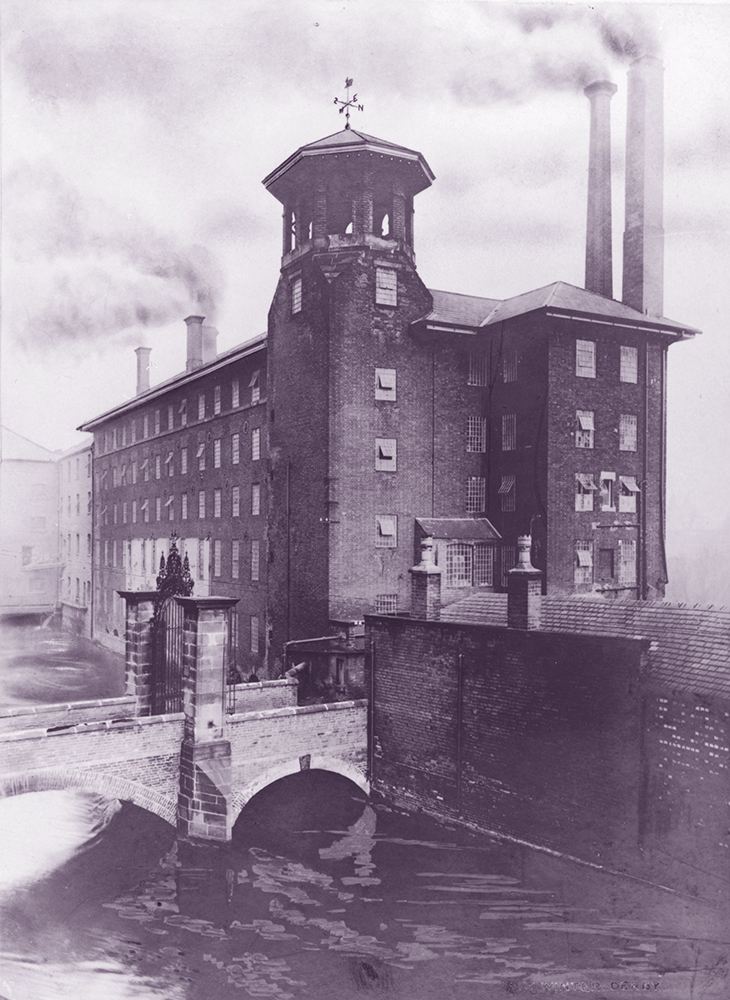
Derby Silk Mill, c. 1908. Photo: Derby Museums
Another half century and the town’s focus shifted away from the river as Derby became a railway town, based on the Midland station and soon boasting its own housing, pubs, hotel, and orphanage for railwaymen’s children. As ever, engineering and innovation determined Derby’s future. When a new ring road opened in 2010, the public voted to name it Lara Croft Way, Tomb Raider having been created by a Derby-based video-game developer.
Meanwhile, the redundant mill in the city centre, long run by the city council as a traditional industrial museum, was mothballed in 2011. The brick structure that survived into the late 19th century had been much rebuilt after a succession of fires and retained little original fabric, even though the form was similar to the early mill. The building lent itself to reinvention. Stripped back to its functional essentials, it offers well-proportioned spaces for an entirely new kind of museum, one made by and for local people and guided by the principles of co-production.
The approach that the team behind the new museum adopted turns out to be as innovative and effective as the Lombes’ mill had been. The key to everything, as Hannah Fox, director of projects at Derby Museums, puts it, was collaboration. To ginger up local interest, the building reopened its doors for an initial weekend in the summer of 2011 to more than 800 people, who helped test out ideas and gain understanding of what it might become. Many thousands more came over the next few years, bringing their stories, rich troves of memory, and goodwill. They were asked the question ‘How do we make the museum?’ and their answers pointed towards a desire to make a social and civic impact – the waves of which would extend far beyond the building. Phased works began with seed funding from the city council and Arts Council England, but in 2015 the Museum of Making was awarded £9.4 million by the Heritage Lottery Fund, with the local D2N2 Partnership contributing £4 million and the city £5 million.
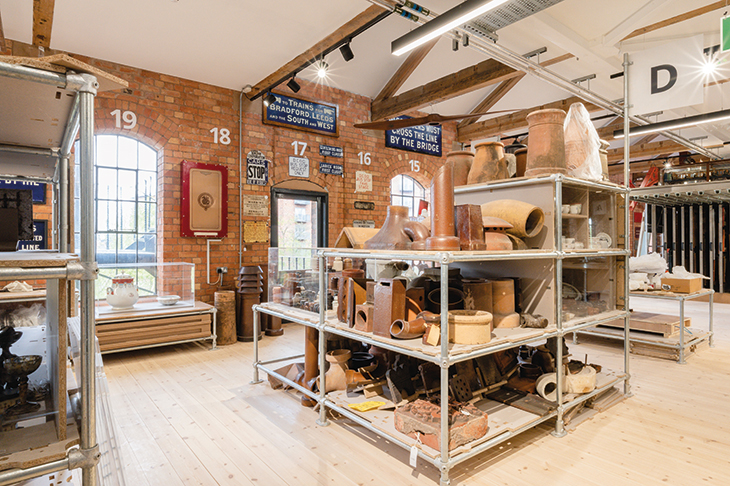
The Assemblage at the Museum of Making, Derby. Photo: © Speller Metcalfe/Derby Museums
As it embarked, the ‘virtual company’ at the helm (the museum, by then a trust, and its professional team) benefited from an innovative, government-backed procurement system. As the architect Guy Smith, of Bauman Lyons, puts it, the novel arrangements incentivised everyone involved, removing much of the conflict around insurance risk that can bedevil the relationship between designers and contractors. Once planning permission was granted, the ground-floor workshop, housed in the rear Sowter Mill, was quickly fitted out to high specification so that they could commission and make their own fittings and furniture on the spot. The museum is all about work (‘making’) and they had begun by proving the point. It is largely in these workshops that the project’s training function continues.
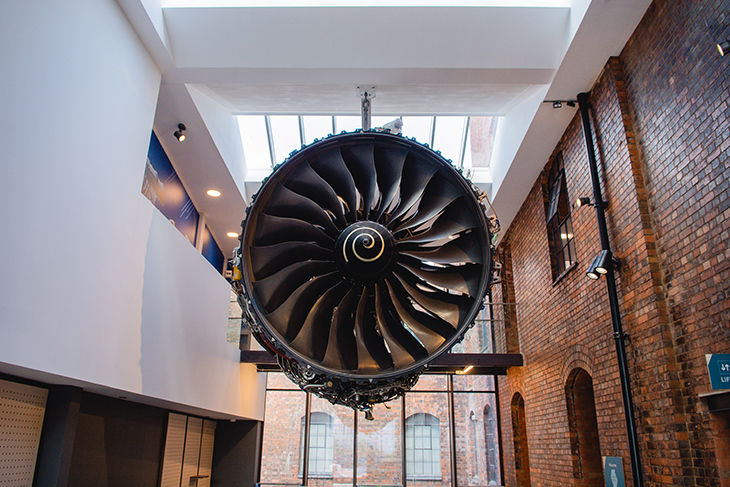
The Rolls Royce Trent 1000 engine in the Civic Hall at the Museum of Making. Photo: © Derby Museums
The physical heart of the Museum of Making is a bold incision into the site. Visitors enter directly through a glazed entrance off the riverside square outside. Inside, in the enormous top-lit foyer, there is a striking sight: an immense Rolls-Royce Trent 1000 engine hangs at the far end, while above the entrance, at the same height, is a Toyota car, its disembodied parts displayed like Cornelia Parker’s ‘exploded’ garden shed. At ground level, the entire left-hand wall is given to a display of modest, entertaining or intriguing objects organised within a taxonomy of materials. Beyond is a congenial cafe and, ahead and upstairs, an interwoven series of galleries and spaces in which the original mill is indicated by retained features such as iron window frames, but not dominant. The mill runs north-south along the river (the island site was lost long ago) and is crowned by the tower, while the smaller block lies east-west. This is a multi-level, multi-era museum, refracting the past, reaffirming the present and registering options, and opportunities, for the future. Visitors can see, quite literally, how the museum was made, with a display of digital drafting technology projected on to the walls it helped design.
The Museum of Making has every kind of space, display and content. There are galleries and study areas for train enthusiasts, and others for those seeking the history of the actual Silk Mill. Nothing is hidden: the entire contents of the old industrial museum are laid out generously, according to material. The Italian Mill, a generous, accessible space running alongside the Derwent, is available for hire; the museum must earn its keep.
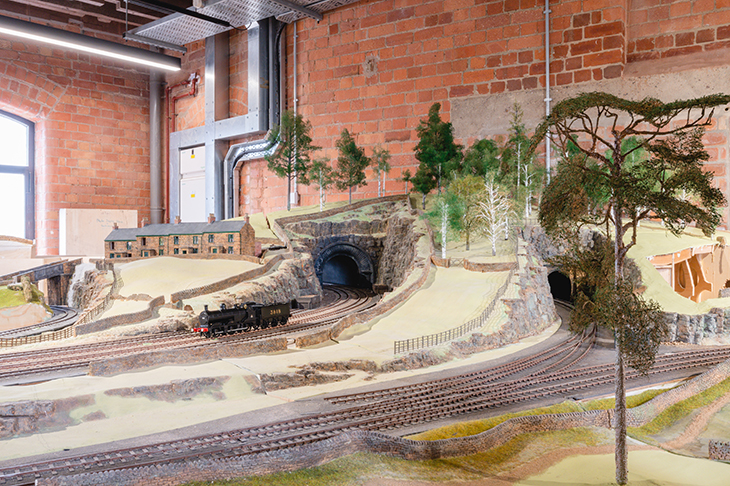
Part of the ‘Railways Revealed’ collection at the Museum of Making. Photo: © Speller Metcalfe/Derby Museums
The museum can justifiably claim to have been ‘made by the makers of today’ – volunteers cleaned 11,000 bricks, while the reciprocal relationships with local business range in scale and content from the considerable financial and practical support given by Rolls-Royce to links with the five-generation family clockmaking firm Smith of Derby. These arrangements involve learning and apprenticeships, as well as volunteer support in the museum workshop, where recent retirees share skills with trainees. Upstairs, substantial areas of the building are equipped for students – whether as individuals or groups from school or college. This is a place in which young people may find their future, perhaps even when they least expect to.
The overall object of the exercise has been, as Hannah Fox puts it, ‘changing what a museum is’. Fox’s original appointment had been for six months, yet here she is, buzzing with energy and ideas, a decade later. Word has it Derby is considering a run at the UK City of Culture crown; the Museum of Making and its inspiring team will surely give it a headstart.
From the October 2021 issue of Apollo. Preview and subscribe here.
Unlimited access from just $16 every 3 months
Subscribe to get unlimited and exclusive access to the top art stories, interviews and exhibition reviews.

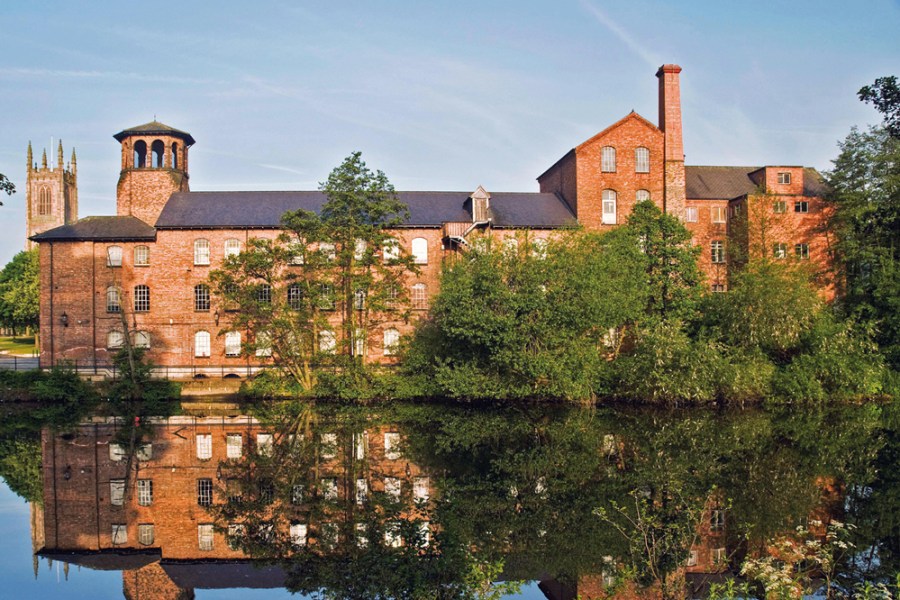
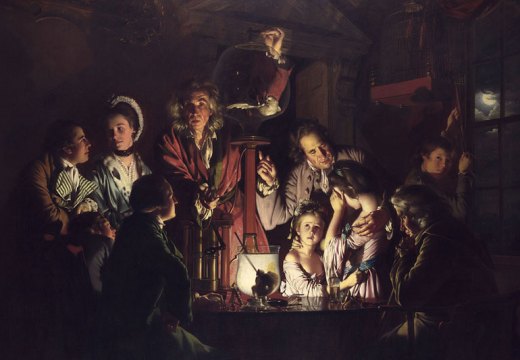
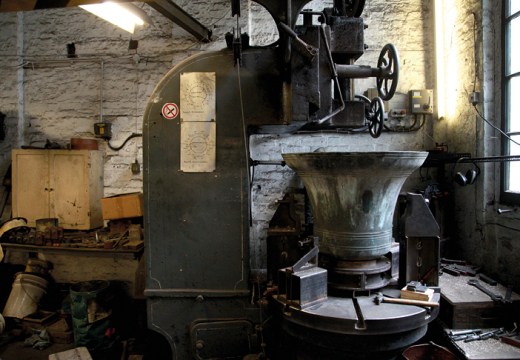
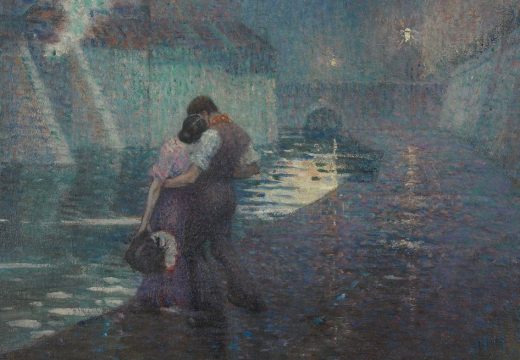









![Masterpiece [Re]discovery 2022. Photo: Ben Fisher Photography, courtesy of Masterpiece London](http://www.apollo-magazine.com/wp-content/uploads/2022/07/MPL2022_4263.jpg)
It’s time for the government of London to return to its rightful home